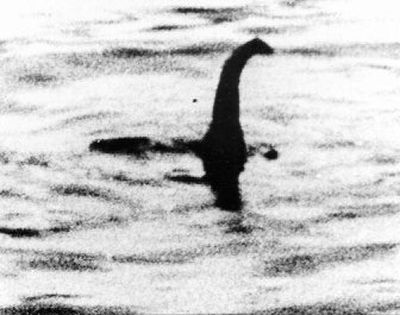Scientist suggests Nessie really a circus elephant

LONDON – So maybe the Loch Ness monster was actually a circus elephant.
Neil Clark, curator of paleontology at the Hunterian Museum in Glasgow, sees striking similarities between descriptions of Nessie and what an Indian elephant looks like while swimming. And perhaps not coincidentally a traveling circus featuring elephants passed by the misty lake in the 1930s at the height of the monster sightings.
“It is quite possible that people not used to seeing a swimming elephant – the vast bulk of the animal is submerged, with only a thick trunk and a couple of humps visible,” thought they saw a monster, Clark said in an interview Tuesday.
By publishing his theory in the current issue of a British scientific journal, Clark has reignited passionate discussion here about the great Scottish mystery.
Clark noted that in 1933, circus impresario Bertram Mills promised anyone who could capture the monster for his circus a 20,000 pound reward, which Clark reckoned would be equivalent to nearly $1.8 million today. Perhaps Mills dared offer such a huge sum because he knew it would never be claimed, Clark speculated.
As early as the sixth century, a “monster” was reported in Loch Ness in northern Scotland; Saint Columba is said to have saved a man who had been attacked by a monster in 565. Since then, and as recently as last year, there have been hundreds of reported sightings.
Clark acknowledged that those before and after the 1930s cannot be explained by the elephant theory. But he said the vast majority of sightings occurred not long after 1933, the first year of the A82, a road that runs alongside the lake. Around that time, Mills’ traveling circus was visiting nearby Inverness and “would have stopped on the banks of Loch Ness to allow their animals to rest.”
At Loch Ness, where scientists have used everything from submarines to sonar to try to explain the mysterious sightings, news that the monster might be a circus owner’s marketing ploy didn’t go down well. Nessie is, after all, at the core of the lake’s lucrative tourist industry.
“Ah! Bloody dismissive, that’s what people are,” said George Edwards, skipper of the Nessie Hunter, a tour boat on Loch Ness.
Reached by phone, Edwards said he didn’t think much of the pachyderm hypothesis. For one thing, he said, “How does it account for more recent sightings?
“Yes, it’s possible – you can never say never, but I think it’s very, very unlikely,” the skipper said.
On Tuesday, many people across Britain found themselves confronted by television and newspaper photos and artist renderings of Nessie and a swimming elephant, and many agreed there were similarities.
“Elephants do swim and they love it,” said Olivia Walter, program coordinator for the British and Irish Association of Zoos and Aquariums, which has found itself fielding lots of questions about the water habits of elephants.
They do indeed submerge their bodies, leaving their trunks above water. Whether they would find Loch Ness refreshing en route to a performance, she said, “is another question.”